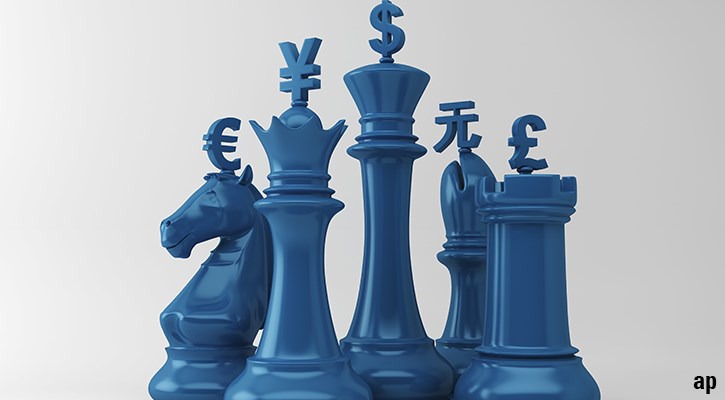
Markets are looking to flash eurozone inflation figures that are due at 11am Central European Time on Tuesday, April 30, for further confirmation that CPI is converging toward the European Central Bank (ECB) target of 2%. The Eurostat data are also crucial to figure out whether the ECB will cut rates in June.
Inflation is forecast to have risen by 2.3-2.4% on the year before, according to consensus estimates, a similar level as in March.
“Having become used to seeing month on month declines in inflation, some market participants might be disappointed to see a flat reading month on month. However, after the positive surprise in March that inflation fell by 0.2%, a flat reading for April is a good result,” said Michael Field, European market strategist at Morningstar.
In March, the greatest contributors to the annual euro area inflation rate came from services (+1.76 percentage points, pp), followed by food, alcohol & tobacco (+0.53 pp), non-energy industrial goods (+0.30 pp) and energy (-0.16 pp), according to Eurostat.
“Our composite measure of long-term inflation expectations has recently declined meaningfully”, Goldman Sachs wrote in the bank's April’s Euro Area Inflation Monitor. “Indicators of near-term price expectations have mostly cooled in recent months. Notably, services selling price expectations have declined for two months running, after a Q4 pickup extending to January.”
By December, Goldman Sachs economists expect eurozone headline and core inflation at 2.6% year on year and 2.3% year on year respectively.
Will the ECB Cut Interest Rates in June?
The ECB left interest rates unchanged in its April meeting, signalling that the first rate cut would come in June. After the announcement, President Christine Lagarde said that “inflation is expected to fluctuate around current levels in the coming months and to then decline to our target next year, owing to weaker growth in labour costs, the unfolding effects of our restrictive monetary policy, and the fading impact of the energy crisis and the pandemic.”
However, ECB officials admitted that the recent increase in oil prices is significant. They are monitoring oil price developments, and in particular the risk of further escalation in the Middle East.
“Higher energy prices will have a mechanical effect on consumer energy prices and, therefore, headline inflation,” according to a Goldman Sachs note, which adds that the pass-through into core inflation is usually much smaller and more uncertain. However, the bank's economists “see limited risks from the recent increase in energy prices for the ongoing disinflation process and the outlook for ECB policy, unless energy prices rise materially more from here.”
Morningstar's Field also sees little risk to the rate-cut timeline. “Inflation is within spitting distance of the ECB’s 2% targeted level, and unlike in the US where concerns of a resurgence in inflation are more pronounced, the picture in Europe is entirely different. Recent polls have economists overwhelmingly predicting June for the first interest rate cut. April 30’s data is very unlikely to change that.”
The core inflation reading will be key, which is expected to have fallen by 0.1% year on year to 2.8%. According to Field, the continued fall in core inflation should be another positive sign, because monetary policy hawks had previously been concerned that services inflation could pick up again in Europe, driven by tight labour markets. The data is expected




























